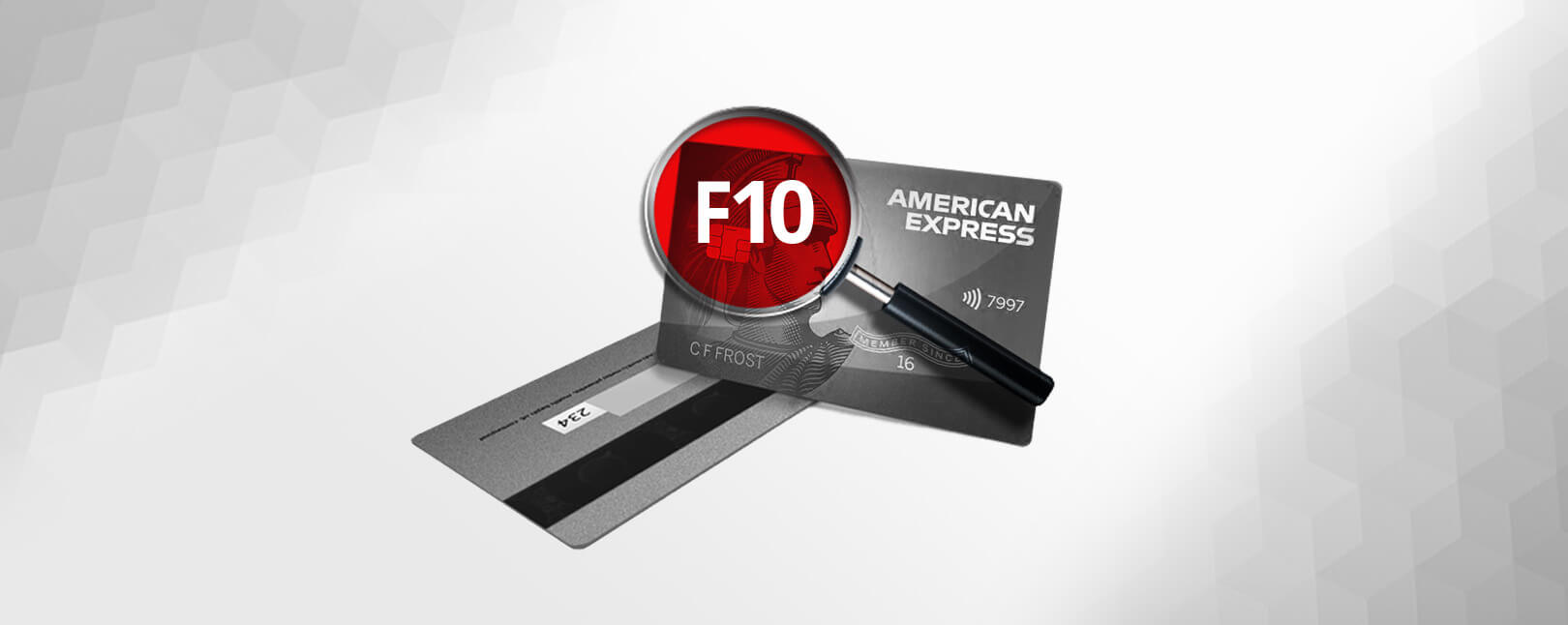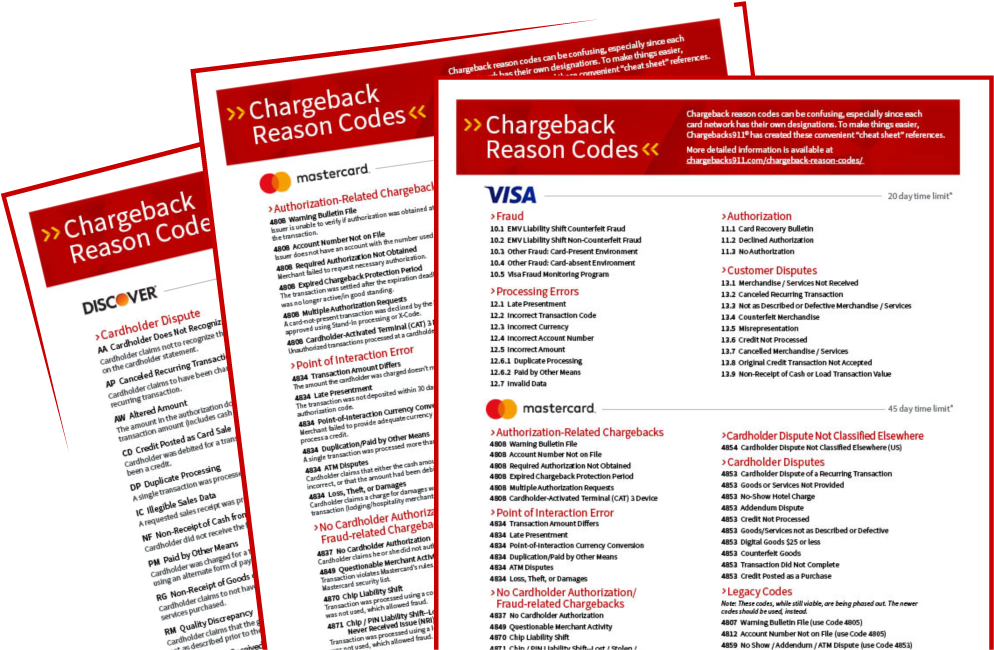
How to Handle Amex Reason Code F10 Chargebacks
American Express breaks down the acceptable causes for a customer to dispute a credit card transaction in their dispute guidelines. This is done for the sake of simplicity and standardization.
Each chargeback trigger has a designated “reason code.” Amex can then assign the appropriate code to each case to show the given reason for the chargeback.
Learn more about Amex reason codes
Today, we’re looking at one reason code in particular — F10 — and exploring the causes, timeframes, fees, and other specifics. We’ll also explore what you can do to prevent these chargebacks from happening.
Recommended reading
- Best Credit Card Processing Companies of 2025 REVEALED
- Chargeback Stats: All the Key Dispute Data Points for 2025
- What Happens When You Dispute a Transaction?
- Economic Uncertainty Pushes Consumers to File Chargebacks
- Stripe Chargeback Fees: Rules, Policies & How to Lower Costs
- Monica Eaton Named a Finalist for ‘CEO of the Year’!
What is American Express Reason Code F10?
American Express chargeback reason code F10 is “Missing Imprint.” This reason code is used to explain that the cardholder claims that a card-present charge was not authorized. Furthermore, you failed to provide an imprint of the card to verify that the purchaser had physical possession of the card.
To illustrate, let’s assume that a customer wants to complete a purchase, but for one reason or another, the buyer can’t “swipe” or “dip” the card electronically. You attempt the transaction by keying in the card information manually. Bu then, several weeks later, the cardholder files a chargeback, claiming the transaction was unauthorized. If you did not capture an impression of the card using a credit card imprinter, you could be held responsible for fraud.
Note that Amex reason code F10 is only applicable for card-present transactions that were not swiped or dipped. It is not applicable for card-not-present transactions that are properly submitted as such. It is also not applicable for any transaction that qualify under the Keyed No Imprint Program.
What is the Keyed No Imprint Program?
The Keyed No Imprint Program is designed to let you process transactions without needing an imprint of the customer's card, provided that certain conditions are met.
As part of the program, American Express agrees not to initiate a chargeback based solely on your inability to provide an imprint of the customer's card. All American Express cards can be used within this program. For a transaction to qualify, though, you have to make sure that:
- The transaction details are manually entered.
- There is an indication that both the card and the cardholder were present at the time of sale, as reflected on the Charge Submission.
- The transaction is approved
- The CID Number is confirmed as a positive match.
American Express also specifies that, if you have excessive Amex disputes, it’s your responsibility to cooperate with your merchant services provider and address this problem. If this collaboration fails to yield results, American Express reserves the right to place you in a Chargeback program.
This means they’ll revoke your participation in the Keyed No Imprint Program. If the problem goes unaddressed for too long, they may discontinue your card acceptance privileges altogether.
What Caused This Dispute?
Amex Chargeback Reason Code F10 is primarily issued when a card-present transaction is conducted without the card being swiped or dipped. To demonstrate, this scenario can arise if:

How to Respond to Amex Reason Code F10 Chargebacks
Upon receiving an Amex F10 chargeback, it’s crucial that you address the situation immediately. If you believe that the chargeback was mistakenly filed, you’ll need to submit a dispute response through a process called representment.
Representment allows you to contest a chargeback. By presenting evidence to the card issuer, (i.e. American Express), you can prove that the transaction was valid and in compliance with the card issuer's rules. This process typically requires several integral pieces of evidence.
It's important to also note that this process is time-sensitive. You have just 20 days to submit your response to American Express. This period also includes the time your acquirer takes to issue a dispute notification, as well as time to review and submit your case. In real terms, this usually means you have less than five days to prepare and submit your response.
Acceptable Evidence for Amex Reason Code F10 Responses
You can re-represent these charges under the condition that you have compelling evidence.
For American Express reason code F10 chargebacks, you’ll need to follow one of three courses, depending on the reason for the chargeback:
The success of representment depends on the thoroughness and relevance of the evidence provided. Maintaining detailed records of transactions and communications with customers is vital to effectively counteract all chargebacks, including those under reason code F10.
How to Prevent Amex Reason Code F10 Chargebacks
As the old adage goes, “an ounce of prevention is worth a pound of cure.”
Preventing chargebacks entirely might be impossible. However, by implementing a few best practices, you can minimize your risk and maintain a healthy chargeback ratio. To avoid F10 chargebacks, it’s generally advisable to:
- Make sure you correctly swipe the card or ensure the chip is read successfully when processing the transaction.
- For transactions where the card is not physically present, ensure these are correctly identified as such and not mislabeled as card-present transactions.
- Consider enrolling in the Keyed No Imprint Program, if applicable.
- For manual or key-entered transactions, create a physical imprint of the card's account information on the transaction receipt. This serves as an additional layer of security and proof of transaction.
Take a Wider View
You can dispute invalid chargebacks from Amex reason code F10. However, it’s much more efficient to take a proactive stance. The same is true of the other chargeback reason codes, as well. A truly effective chargeback management strategy must encompass prevention as well as disputing cases of friendly fraud.
Chargebacks911® can help your business manage all aspects of chargeback reason codes, with proprietary technologies and experience-based expertise. Contact us today for a free ROI analysis to learn how much more you could save.
FAQs
Does Amex investigate chargebacks?
Yes. American Express investigates chargebacks by reviewing the evidence provided by both the merchant and the cardholder to determine the legitimacy of the transaction and decide on the chargeback claim. This process ensures a fair resolution based on the documentation and arguments presented by both parties.
What is the reason code for a chargeback on American Express card?
An American Express chargeback reason code is a code that identifies the specific reason a cardholder or issuing bank has disputed a transaction, guiding the merchant on the nature of the dispute and what evidence may be required to contest it. Each code corresponds to a particular issue, such as unauthorized use, processing errors, or non-receipt of goods or services. Click here to see a full list of Amex reason codes.
Do police investigate chargebacks?
Police typically do not investigate chargebacks as they are considered a dispute between the merchant and the cardholder, handled through the card issuer's internal processes. However, if fraud is suspected as the cause of a chargeback, law enforcement may be involved in investigating the fraudulent activities.
How successful are Amex disputes?
The success of an American Express dispute depends on the merchant's ability to provide compelling evidence that the transaction was valid and in accordance with Amex policies. Success rates vary widely based on the nature of the dispute and the quality of the documentation provided by the merchant.
How does American Express investigate disputes?
American Express investigates disputes by reviewing documentation and evidence provided by both the cardholder and the merchant, such as transaction receipts, proof of delivery, or communication records, to determine the validity of the chargeback claim. This process aims to ensure a fair resolution based on the facts presented by both parties.











